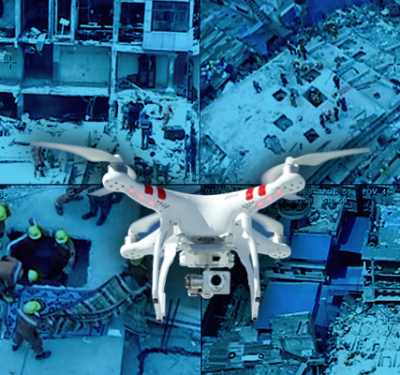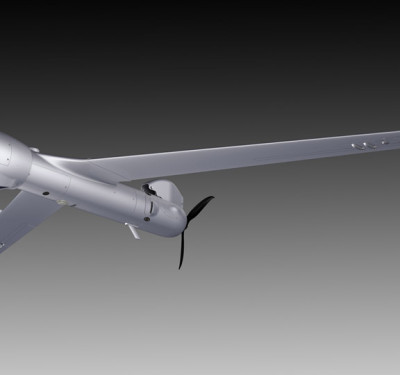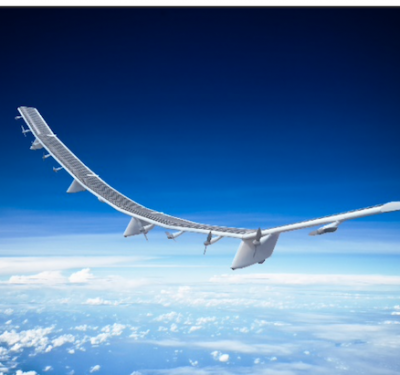
Work is underway to determine specifically what is needed to allow small drones to fly limited long-distance flights and how different technologies might meet those needs. The research, which was requested by the Federal Aviation Administration (FAA), is proceeding at a fast clip with the first results due at the end of September.
The effort has been divided into two studies and is being managed by ASSURE (the Alliance for System Safety of UAS through Research Excellence), which was chosen last spring to be the FAA’s new Center of Excellence for Unmanned Aircraft Systems (UAS).
Two ASSURE teams—one from New Mexico State University (NMSU) and one from the University of North Dakota (UND)—are working together on beyond line-of-sight and related detect and avoid technologies. In a closely related project ASSURE researchers from North Carolina State University (NCSU) and Ohio State University (OSU) are looking at what can be done with technology available now for manned aircraft to support UAS flights with the least amount of expense and disruption.
Wanted: Real World Data
The complexities involved are enormous and ASSURE is reaching out to industry to ensure their results incorporate operators’ real-world experience.
“I can imagine 1,000 different ways that someone could fly but there are some ways that people are actually operating and we want to get that information,” said Henry Cathey, a NMSU professor and one of the lead researchers on the project.
They are interested in getting flight data and use cases that flesh out the ways people are using unmanned aircraft to accomplish tasks, Cathey said. They would like information on any type of application including activities such as search and rescue, pipeline monitoring, photography, infrastructure inspection, agricultural remote sensing, wildlife assessment, ice spotting and livestock management—plus any other applications operators would like them to consider. Anyone can submit cases or flight data including international firms.
“We would like input from as many places as possible,” Cathey said. The data would be protected, he said. “We will ensure that the flight data will only be used for research and it will not be disseminated to other organizations.” Organizations who want to participate but are concerned about propriety information can consider submitting representative cases, he said.
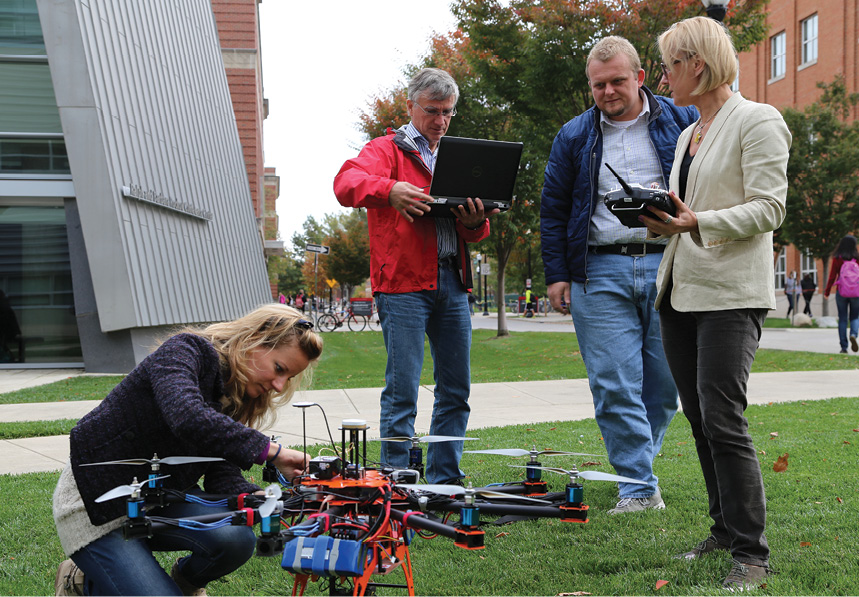
Sense and Avoid Solutions
ASSURE will use the flight information to create representative use cases—examples based on compellations of similar applications. Power line inspection, for instance, might be grouped with pipeline inspection as they both involve long, linear flights along known, largely unpopulated stretches. In this first phase the teams will focus on applications over non-populated areas, away from airports and at altitudes largely below 500 feet—though they will include use cases that range up to 1,000 feet in altitude.
Information from the representative cases will be used to build an operational framework that will be the basis for equipment testing, Cathey said.
“If we have a system that we want to test, how do you test it?” Cathey explained “…The operational framework is going to give us the set of conditions, and maybe multiple different operational configurations, that we try to fly. It says ‘here is what this case looks like’ and ‘here’s how we’re going to fly to test that case.’”
Cathey and his University of North Dakota colleague Mark Askelson will use the framework to test sense and avoid solutions—that is technology or procedures aimed at preventing collisions in the air and on the ground—an essential element of beyond line-of-sight operations.
New Ideas Welcome
The research teams will assess a wide range of ideas including ground-based sense and avoid systems and those that would require unmanned aircraft to carry new equipment. One example of the later is an idea that got a lot of attention in 2015—using ADS-B transponders sized down for UAS. (ADS-B stands for Automatic Dependent Surveillance–Broadcast, a tracking system used for manned aircraft.)
Firms that are developing cloud-based solutions are invited to participate, as are those with ideas for UAS air traffic control or changes to procedures. ASSURE is particularly, but not exclusively, interested in flight-ready systems. New approaches will be considered, they said, as will systems that are promising but whose equipment may only be at the breadboard or prototype stage.
“We would love to be able to test that technology with the idea that, if it proves out, then you go to the next step,” Cathey said.
They will also look at systems proposed by NASA and the Defense Department, ASSURE Executive Director Gen. James Poss said.
“We’ll be looking, for example, at what the Air Force is doing with its ground-based sense and avoid radar,” Poss said, “and whether we can fuse that with what NASA is doing with its systems to make a single system that is safer than the sum of its parts.”
The researchers will want to determine just how far out a proposed technology will be able to see other aircraft, Askelson said.
“What are the limitations of that technology and the probability of detection—how often might it miss something? It’s those kinds of data that we’re after,” he told Inside Unmanned Systems.
In the cases of onboard systems they’ll be looking at size, weight and power and—for all the systems they test—cost.
“We’ve got an evaluation process that those research team leads will go through to look at an idea that we take from industry to make sure that it’s a reasonable, feasible answer to problems—something we can implement,” Poss said.
Though it will take a good deal of time, Askerson said, the FAA ultimately wants to use the research to develop standards for small UAS detect and avoid.
“Once you have the standards then you know as a producer what you have to be able to do; what capabilities does your system have to have,” he said. “And then from that we can have operating rules, limitations and guidelines for this kind of operation.”
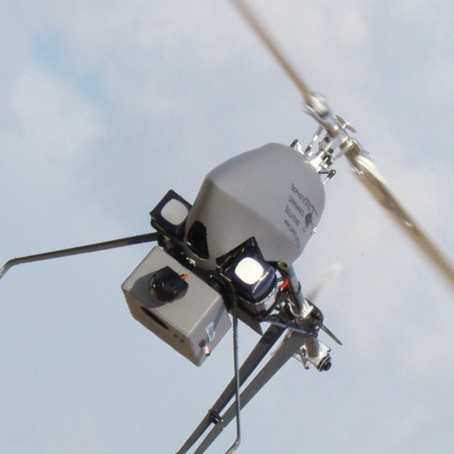
Surveillance Criticality
As part of the overall effort to support beyond line-of-sight operations, the FAA also has asked ASSURE to evaluate what can be accomplished with the sense and avoid systems now used by manned aircraft.
Using simulators the researchers will evaluate the potential for ADS-B and TCAS (the Traffic Alert and Collision Avoidance System) to support UAS. They will then apply what they’ve learned in a study of the Low Altitude Tracking and Avoidance System or LATAS—a sense and avoid solution proposed by PrecisionHawk that would use the nation’s cellular networks to track UAS. PrecisionHawk is part of the FAA’s Pathfinder program for beyond line-of-site operations.
The team wants to characterize the effect on the manned systems if they were to be operated without a pilot using the current CONOPS, that is the concept of operations developed as part of the aviation standards setting process. The concept of operations might include things like staying in a particular air corridor or avoiding certain types of flights, and how to handle different weather conditions.
We want to “evaluate all that so we can come out with the standards and those descriptions and say ‘these are areas we need to do more research into’ or ‘here’s the standards that need to be considered or the factors that need to be considered in the standards,’” said Kyle Snyder, director of NCSU’s NextGen Air Transportation (NGAT) program.
Unlike the ongoing sense and avoid studies, Snyder’s team will evaluate the three systems’ usefulness for drones of all sizes operating in urban as well as rural areas at a variety of altitudes. Toward the end of the three-phase project the team may also be asked to determine if adding ADS-B transponders to thousands of unmanned aircraft system might overload the ADS-B system.
Once Snyder’s researchers get done with running their simulations they will have an idea of what will not work, what might work and what works best—including “a yardstick” for making those judgments.
“At the end of this we should know what a really good system should be able to do,” Snyder told Inside Unmanned Systems. “So we should be able to come out with metrics to evaluate either new solutions of existing ADS-B or TCAS concepts or new solutions of new technologies—like LATAS.”


